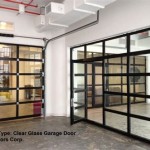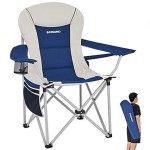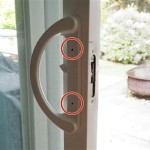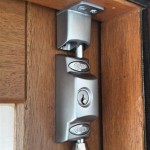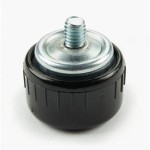Achieving a Stunning Wet Look with Concrete Patio Sealer
Concrete patios offer a durable and versatile outdoor space for relaxation and entertainment. However, bare concrete can appear dull and susceptible to staining, fading, and damage from the elements. Applying a concrete patio sealer not only protects the surface but can also enhance its aesthetic appeal, particularly with a "wet look" finish. This article explores the benefits of using a wet look concrete patio sealer, different types available, application techniques, and factors to consider when choosing the right product for a specific project.
Understanding the Benefits of Wet Look Concrete Patio Sealers
A wet look concrete patio sealer is formulated to provide a deep, glossy appearance that mimics the look of freshly poured or consistently damp concrete. This aesthetic enhancement is a primary reason homeowners opt for this type of sealer. Beyond aesthetics, wet look sealers offer several practical advantages.
Durability is significantly improved. The sealer forms a protective barrier against water penetration, which is a major cause of concrete deterioration. Freeze-thaw cycles, where water seeps into the concrete, freezes, and expands, can cause cracking and surface spalling. A good wet look sealer minimizes this risk.
Resistance to staining and chemicals is another critical benefit. Outdoor patios are exposed to various substances that can stain or damage concrete, including oil spills, grease, food residue, and cleaning chemicals. A sealed surface is easier to clean and less likely to absorb these contaminants.
UV protection is also offered by many wet look sealers. Prolonged exposure to ultraviolet (UV) radiation can cause the concrete to fade and discolor. Sealers that contain UV inhibitors help to maintain the color and appearance of the concrete over time.
Finally, wet look sealers can enhance the concrete's natural color and texture. They often deepen the existing tones and highlight any decorative elements, such as exposed aggregate or stamped patterns. This enhancement contributes to a more visually appealing and inviting outdoor space.
Types of Concrete Patio Sealers for a Wet Look Finish
Several types of concrete sealers can achieve a wet look finish, each with its own properties, application requirements, and performance characteristics. Understanding these differences is essential for selecting the right sealer for a particular project.
Acrylic sealers are a common and relatively affordable option. They are typically water-based or solvent-based and provide a good level of protection against water and stains. Acrylic sealers are often easy to apply and dry quickly. However, they tend to be less durable than other types of sealers and may require more frequent reapplication, typically every one to three years. Their breathability is a key advantage, allowing moisture vapor to escape from the concrete, preventing blistering and delamination. Acrylic sealers offer a balance of cost-effectiveness and ease of use, making them suitable for residential patios with moderate traffic and exposure.
Epoxy sealers are known for their exceptional durability and resistance to chemicals. They form a hard, glossy surface that is ideal for high-traffic areas and environments where chemical spills are likely. Epoxy sealers are typically two-part systems that require mixing before application. They offer excellent adhesion and provide a long-lasting wet look finish. However, they are less breathable than acrylic sealers and can be more challenging to apply. Surface preparation is crucial for epoxy sealers to bond properly. They are a good choice for commercial patios or residential patios where maximum protection and durability are required.
Polyurethane sealers offer a combination of durability, flexibility, and UV resistance. They are more flexible than epoxy sealers, making them less prone to cracking in areas with temperature fluctuations or ground movement. Polyurethane sealers also provide excellent abrasion resistance and are suitable for areas with heavy foot traffic. They typically have a longer lifespan than acrylic sealers and offer a good balance of performance and cost. They are available in both water-based and solvent-based formulations. Polyurethane sealers are a versatile option for achieving a wet look finish on concrete patios, providing a durable and aesthetically pleasing surface.
Penetrating sealers, while not specifically designed to create a wet look finish, can sometimes enhance the natural color of the concrete and provide a subtle sheen. These sealers penetrate the concrete pores and create a hydrophobic barrier, repelling water and preventing staining. While they don't offer the same glossy appearance as acrylic, epoxy, or polyurethane sealers, they provide excellent protection without significantly altering the concrete's natural texture. They are a good option for those who prefer a more natural look with enhanced protection. Silane and siloxane sealers are examples of penetrating sealers commonly used on concrete patios.
Application Techniques for Achieving the Best Wet Look Finish
Proper application is crucial for achieving a desirable wet look finish and ensuring the sealer's performance. Following the manufacturer's instructions carefully is essential for each specific product.
Surface preparation is the first and perhaps most important step. The concrete surface must be clean, dry, and free of any contaminants, such as dirt, grease, oil, or existing coatings. Power washing the concrete is often necessary to remove loose debris and surface stains. For stubborn stains, a concrete cleaner or degreaser may be required. Any cracks or repairs should be addressed before applying the sealer. Allow the concrete to dry completely before proceeding.
Choosing the right application method also matters. Sealers can be applied using a variety of methods, including rollers, brushes, and sprayers. Rollers are a good choice for applying even coats of sealer over large areas. Brushes are useful for edging and detail work. Sprayers can provide a quick and efficient application, but require careful technique to avoid runs and drips. It is best to use equipment recommended by the sealer manufacturer.
Applying multiple thin coats of sealer is generally preferable to applying one thick coat. Thin coats allow the sealer to penetrate the concrete pores more effectively and reduce the risk of bubbling or blistering. Allow each coat to dry completely before applying the next coat, following the manufacturer's recommended drying times. The number of coats required will depend on the type of sealer, the porosity of the concrete, and the desired level of gloss.
Temperature and humidity considerations influence the application. Most sealers should be applied when the air and surface temperatures are within a specific range, typically between 50°F and 90°F. High humidity can slow down the drying process and affect the sealer's adhesion. Avoid applying sealer in direct sunlight or during periods of rain or high wind. Monitoring the weather forecast and planning accordingly is essential.
Curing and maintenance also play a role. Once the sealer has been applied, it needs to cure properly. Curing involves allowing the sealer to fully harden and develop its protective properties. The curing time will vary depending on the type of sealer and the environmental conditions. During the curing process, it is important to protect the sealed surface from foot traffic, water, and other potential contaminants. Regular cleaning with a mild detergent and water will help to maintain the sealer's appearance and performance over time. Periodic reapplication of the sealer may be necessary to maintain the wet look finish and ensure continued protection.
Factors to Consider When Choosing a Wet Look Concrete Patio Sealer
Selecting the right concrete patio sealer involves considering several factors specific to the project's requirements and the environment.
Traffic and usage patterns are important. High-traffic areas, such as walkways and seating areas, require a more durable sealer than low-traffic areas. Consider the types of activities that will take place on the patio and choose a sealer that can withstand the expected wear and tear. Epoxy or polyurethane sealers are typically recommended for high-traffic areas, while acrylic sealers may be suitable for low-traffic areas.
The existing condition of the concrete is another factor. Porous or damaged concrete may require a different type of sealer than smooth, well-maintained concrete. If the concrete has cracks or repairs, it is important to address these issues before applying the sealer. A penetrating sealer may be used to fill small cracks and improve the concrete's overall condition. The sealer's ability to adhere to the existing surface is crucial for its long-term performance.
Environmental factors, such as climate and exposure to sunlight, also influence the choice of sealer. In areas with harsh winters and frequent freeze-thaw cycles, a sealer with good water resistance and flexibility is essential. If the patio is exposed to direct sunlight, a sealer with UV inhibitors is recommended to prevent fading and discoloration. Consider the specific environmental challenges that the patio will face and choose a sealer that can withstand these conditions.
The desired level of gloss also comes into play. Wet look sealers are available in different gloss levels, ranging from a subtle sheen to a high-gloss finish. Consider personal preferences and the overall aesthetic of the outdoor space when choosing a gloss level. It's best to view samples of different gloss levels before making a final decision. Some sealers allow for adjusting the gloss level by applying multiple coats or using a specific type of finish coat.
Finally, consider cost and ease of application. The cost of concrete sealers can vary significantly depending on the type of sealer and its performance characteristics. Balance the cost of the sealer with its expected lifespan and performance benefits. Also consider the ease of application and the tools and equipment required. Some sealers are easier to apply than others, and some require specialized equipment. Choose a sealer that is within your budget and that you feel comfortable applying yourself, or hire a professional contractor to handle the application.

Wet Look Concrete Sealer What You Need To Know

Foundation Armor 5 Gal Solvent Based Acrylic Wet Look Concrete Sealer And Paver Ar3505gal The Home

Wet Look Concrete Sealer How To Add Shine And Protection

Wet Look Concrete Sealer What You Need To Know

Foundation Armor Ultra Low Voc 5 Gal Clear Wet Look High Gloss Acrylic Concrete Aggregate And Paver Sealer Ar50050voc5gal The Home

How To Achieve A Wet Look With Concrete Sealer The Paver Store

Wet Look Concrete Sealer What You Need To Know

Foundation Armor 1 Gal Solvent Based Acrylic Wet Look Concrete Sealer And Paver Ar3501gal The Home

Wet Look Patio Sealer Best On Stone Slate Sandstone With A 3 For 2 Deal

The Best Wet Look Concrete Sealer To Protect Your Floor

